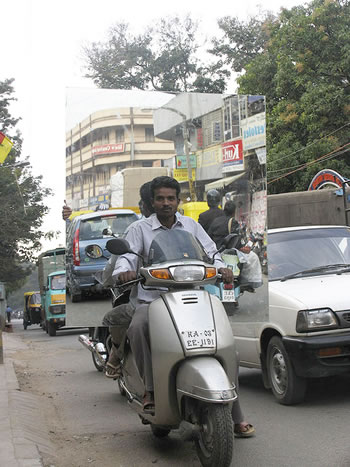Ignoring traffic rules in India now exposes you to the obligation of paying an e-challan. The authorities in this country are trying to bring Indian traffic to the internationally agreed standards, and punishing undisciplined drivers is one of the measures they have begun taking.
Consequently, any driver who does not follow the traffic rules in force is susceptible to paying a traffic challan if the police catch them or the cameras installed on the main roads record them breaking the law.
When are drivers forced to pay an e-challan for traffic matters?
There are important traffic rules that anyone driving a vehicle in India should follow, or could otherwise be forced to pay a traffic e-challan:

![]() by Paul Keller
by Paul Keller
- The registration plate must be clear, use the agreed font and size and be easy to read.
- All traffic signs should be known and followed, no matter if they refer to speed, parking, or u-turns.
- Pedestrians should be allowed to cross the street where special signs like pedestrian crossings are present.
- Drivers should always stop at the red light and wait for it to turn green.
- Turns should be adequately signaled, so as to allow the drivers to follow to anticipate the moves of the cars in front of them and avoid accidents.
- When driving in the city at night, one should never turn their high beam on, because it could blindfold someone driving from the opposite direction and cause accidents. The driver using the high beam would be liable for any damages and also have to pay the corresponding e-challan.
- The high beam should not be used when driving through the fog either, because the light will be reflected and will reduce visibility.
- At crossroads signaled with blinkers, slow down and make sure the road is clear or you have priority before passing through.
Restrictions to comply with for two-wheel vehicles drivers who wish to avoid paying an e-challan
Motorbikes, motorcycles, scooters and mopeds riders have to comply with some traffic rules as well, the most important being listed below.
- Wearing a helmet – In certain cities, the pillion rider is required to wear a helmet as well. There are also exceptions, like the members of the Sikh community, who wear turbans, and women, in certain cities.
- The number of people riding the same vehicle is restricted to two. If exceeded, the penalty will be paid by the driver.
- In the cities where two-wheelers have dedicated lanes, meant to ensure the safety of the riders and of other traffic participants, driving on other lanes, designated for other categories of vehicles will attract penalties.
The Indian authorities make continuous efforts to implement international standards and make traffic safer and more convenient. Drivers who do not adhere to these standards and break the above mentioned rules and not only, will be fined.
But paying the fine is not the last thing drivers have to do. After paying a challan for tax deducted at source, for instance, one should verify the TDS challan status, to make sure that everything is in order. The same verification should be performed after paying the e-challan for disobeying the traffic rules.